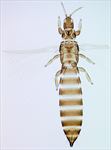
Female

Male
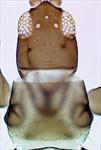
Head & pronotum

Antenna

Thoracic sternites
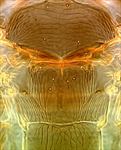
Meso & metanota

Female tergites VIII-X
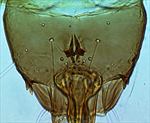
Male tergite IX
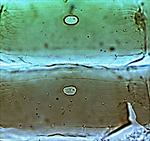
Male pore plates

Fore wing
Female fully winged. Body brown, tarsi and antennal segment III yellowish; fore wings light brown. Antennae 8-segmented; segment III asymmetric with simple sense cone at apex, IV with simple sense cone. Head longer than wide, projecting in front of eyes; three pairs of ocellar setae present, pair III anterolateral to triangle, scarcely longer than distance between two ocelli. Pronotum with one pair of long posteroangular setae. Metanotum reticulate, campaniform sensilla present, median setae arise behind anterior margin. Fore wing first vein with 2 setae on distal half, second vein with about 8 setae. Abdominal tergites reticulate medially, with one pair of campaniform sensilla close to posterior margin; craspedum not developed; tergite X with one pair of stout thorn-like setae at posterior. Sternites II–VII with 5–10 discal setae, without craspeda.
Male wingless, without ocelli on head; tergite IX medially with pair of stout thorn-like setae on tubercles, posterolateral pair of setae also short and stout; sternites III–VII with small sub-circular pore plate.
The genus Limothrips includes six species that are considered to be valid (zur Strassen, 2003). These all live on various grasses. Although they came originally from Europe, three species are now widespread around the world.
Breeding on leaves and in leaf axils of various Poaceae, including cereal crops. Feeding results in the apical leaves turning white on various grasses and young cereal crops (Lewis, 1997).
Originally from Western Europe, but now widespread in temperate areas although apparently not in northern China. Although recorded from Puerto Rico, this species is not usually found in the wet tropics.
THRIPIDAE - THRIPINAE
Limothrips cerealium (Haliday)
Thrips (Limothrips) cerealium Haliday, 1936: 445
Limothrips avenae Hinds, 1902: 139
Limothrips aptera Karny, 1914: 56
Limothrips minor Bagnall, 1927: 565
Limothrips astutus Priesner, 1964: 115
Lewis T (1997) Pest thrips in perspective, pp. 1–14 in Lewis T [ed] Thrips as Crop Pests. CAB International
Mound LA, Collins DW, Hastings A (2018) Thysanoptera Britannica et Hibernica - Thrips of the British Isles. Lucidcentral.org, Identic Pty Ltd, Queensland, Australia. https://keys.lucidcentral.org/keys/v3/british_thrips/
zur Strassen R (2003) Die terebranten Thysanopteren Europas und des Mittelmeer-Gebietes. Die Tierwelt Deutschlands 74: 1–271.